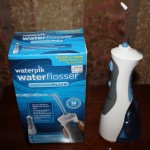Congratulations! This exciting time in your life is filled with joy but also additional doctor appointments and educational classes. One appointment you should make sure to keep is your six month dental cleaning and exam.
During pregnancy, body changes and increased hormones can affect your gums and teeth. Many women report increased inflammation, redness, and bleeding in their gums during pregnancy. If this occurs, maintain a consistent brushing and flossing routine even if the tissues bleed a little. Make sure to use a toothbrush with soft bristles. Angle your toothbrush towards the gumline and lightly massage the junction where the tooth meets the gum. Your dental hygienist can suggest a variety of tips and products to help with your individual care during this time.
Pregnancy also marks a time of potential increase of cavity development. Morning sickness can prevent your usual AM routine while sweet cravings may increase the frequency of sugar intake. Bland, unflavored toothpaste may help in the morning and remember that only a pea sized dab is needed. Excess toothpaste may contribute to the nauseas feeling. Drink lots of water between snacks and remember that the more sugary snacks eaten- the higher the risk of tooth decay.
If you are planning to get pregnant- see your dentist first. Ideally any dental needs (x-rays, infections, cavities, gum disease, etc.) will be identified and treated before becoming pregnant. As bacteria can travel from the mouth to the rest of the body, staying up to date with your with dental health before becoming pregnant is another preventive measure to help your developing baby.
During your pregnancy visit, elective procedures will be postponed until after the birth of your child. These include routine x-rays, cosmetic care, and small cavities that can be safely filled in a few months. Dental emergencies and infections will be evaluated and if necessary for the health of the mother and child, dental treatment will occur. According to the American College of Obstetricians and Gynecologists, the low amount of radiation of a dental x-ray should not pose any risk to the baby when your baby’s safety is considered. With many x-rays a lead apron covers your abdomen, pelvis, and neck area for added protection to you and the baby. The dental assistants, dental hygienists, and dentists at McCarl Dental Group are all x-ray certified and have taken courses and exams to ensure they understand the highest standard of care in terms of x-ray techniques and safety. Both McCarl Dental Group offices offer the newest technology in terms of digital x-rays which are faster and less radiation than the traditional film.
Please call Our Millersville Maryland dental office at 410-987-8800 or our Dental Office in Historic Greenbelt at 301-474-4144 to schedule your dental cleaning and check up and rest assured you are taking one more measure to protect the health of your body and your baby. You may also visit our website at https://www.mccarldental.com/ to request an appointment.

